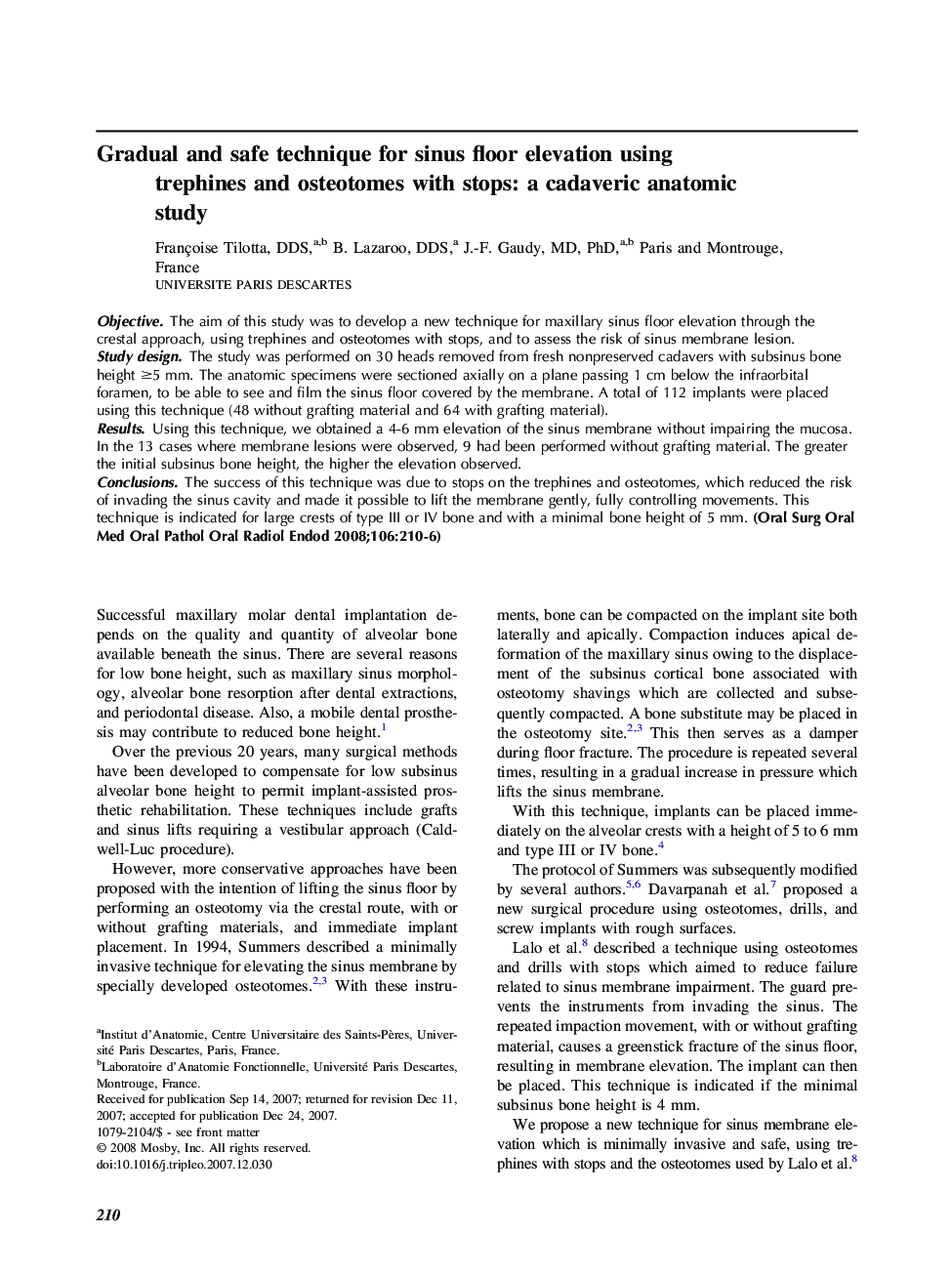| Article ID | Journal | Published Year | Pages | File Type |
|---|---|---|---|---|
| 3168554 | Oral Surgery, Oral Medicine, Oral Pathology, Oral Radiology, and Endodontology | 2008 | 7 Pages |
ObjectiveThe aim of this study was to develop a new technique for maxillary sinus floor elevation through the crestal approach, using trephines and osteotomes with stops, and to assess the risk of sinus membrane lesion.Study designThe study was performed on 30 heads removed from fresh nonpreserved cadavers with subsinus bone height ≥5 mm. The anatomic specimens were sectioned axially on a plane passing 1 cm below the infraorbital foramen, to be able to see and film the sinus floor covered by the membrane. A total of 112 implants were placed using this technique (48 without grafting material and 64 with grafting material).ResultsUsing this technique, we obtained a 4-6 mm elevation of the sinus membrane without impairing the mucosa. In the 13 cases where membrane lesions were observed, 9 had been performed without grafting material. The greater the initial subsinus bone height, the higher the elevation observed.ConclusionsThe success of this technique was due to stops on the trephines and osteotomes, which reduced the risk of invading the sinus cavity and made it possible to lift the membrane gently, fully controlling movements. This technique is indicated for large crests of type III or IV bone and with a minimal bone height of 5 mm.
